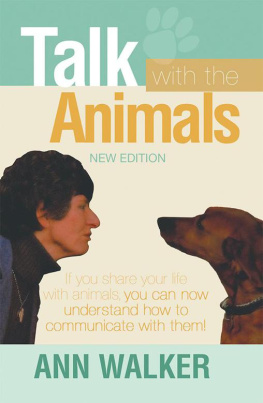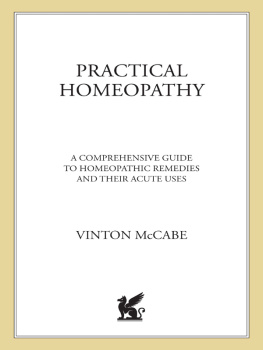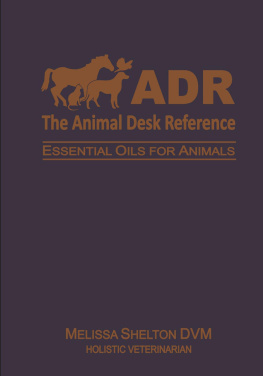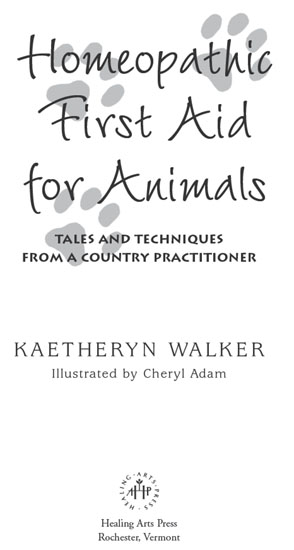
This book is dedicatedwith deep gratitude and respect toStephen Tobin, Dr. Med. Vet., teacher, mentor,and dear friend, who helped me understandthat the right question is the answer.
Acknowledgments
Special thanks are due to all the animals with whom I have been blessed to work over the years. Their gentle acceptance of my desire to help, coupled with their willingness to communicate helpful messages, has taught me valuable lessons in my evolution as one who wishes to alleviate suffering.
Thanks and gratitude for all manner of help and encouragement go to Nancy Bouffard, Karen and Bill Collins, the Corbin family, Dr. Rhonda Feiman, Dianna Gould, Petra Hall, Betty Hawkins, Kathleen Kravik, Forrest Lancaster, Dianne Lee, Sand Leiser, Jeanette Maher, Pam Massey, Suzanne Richman and Goddard College, Katharine Scherer, and Martin Steingesser. I also thank Nancy Backman, who brought homeopathy to my attention at a time in my life when I despaired of finding an approach that facilitated true healing; you are present daily in my work and in my heart.
My heartfelt thanks to my agents, Cheryl Seal and David Adam, whose enthusiasm, professionalism, and conscientious responsibility brought this work to the public arena and who understood that some things are simply meant to be. Because of Cheryls astute and intuitive insight, this book took shape in this form. Behind the scenes, and attending to every minute detail and scattered thread, Davids devotion to the endless minutiae of the literary industry made this book a reality. I could not have done it without them.
Deep appreciation and gratitude go to all the folks at Inner Traditions International who made this book happen in the best way possible, especially Jon Graham, Rowan Jacobsen, Deborah Kimbell, and Christine Sumner.
Preface
For many of us who share our lives with animal companions, their traumas, accidents, and illnesses are no less upsetting and dramatic than our own. The signs and symptoms of an animal in distress are very much the same as those for humans in distress: crying out, difficulty breathing or moving any body part, stupor, dizziness, vomiting, diarrhea, discharges or bleeding from a body opening or part, fever, excessive coldness of a body part, undue anxiety or fear, loss of consciousness, and unusual symptomsboth mental and physicalthat come on suddenly. Any of these symptoms may be caused by accidents that you may witness. Less noticeable causes may include events you may not witness firsthand, such as poisonings, insect bites, punctures, or territory disputes with other animals, to name a few.
But as dramatic as all this sounds, you can make a big difference in the well-being of your animal companion. With the proper information and tools at your disposal, you will be able to handle almost any emergency situation involving your animal companion. Being well prepared, informed, and calm will give you an edge that may well save your animal companions life in the event of a serious emergency.
As with any illness or accident requiring first aid, it is in everyones best interest for you to be familiar with what to do and how to do it. For this reason it is recommended that you read through this manual before an emergency situation arises. Familiarize yourself with the layout of the manual, the names of the remedies, the first-aid techniques, and the symptoms unique to each remedy.
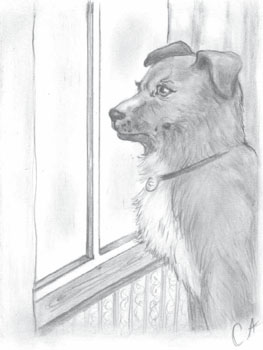
It is also important to jot down, inside the front cover of this book, the phone number of your animals veterinarian so that it will be readily available to you in the event of an emergency. Call your veterinarian and ask if he or she is available for emergencies, which may occur during the night or on weekends or holidays. If your veterinary clinic cannot accommodate non-business-hour emergency visits, ask for a referral; if such a referral is not available from your vet, find an emergency-hours vet in your area. Find out how your emergency call will be handled. Will a recorded message be forwarded to a pager or an answering service? Will your call be immediately returned, or will there be a short waiting period? Will a vet be willing to make an emergency house call? Again, it is a good investment to be fully prepared ahead of time; you may not have the luxury of wasting precious minutes tracking down help, and the better prepared you are to handle emergencies, the better your chances of a successful outcome.
In cases of accidental poisoning of animals, advance preparation may save a life. Do take a moment to locate in chapter 29 (p. 150) the phone number for Animal Poison Control in Georgia, decide ahead of time which of the two offered phone numbers you will call if you ever need to do so, and post copies of the emergency phone numbers for both your vet and Animal Poison Control by the telephone. You may not have precious minutes to waste in this type of first aid situation.
In addition to first-aid techniques and homeopathic and supplementary care for animals, there are other important topics covered in this manual. Instructions for how to make a simple electrolyte solution are offered, as well as substitute infant milk formulas for kittens and puppies. There is also important information about how much and how frequently to feed an orphaned infant.
Homeopathic remedies can be safely and effectively used for all species of animals. Homeopathy is even applicable to birds and reptiles, and special notes on these species are included at the end of the manual.
Introduction
This homeopathic first-aid manual for animals was laid out for ease of use by the general public. It is not necessary to have a medical or an emergency medical technicians certificate to use it successfully. The first chapter provides guidance for treating your animal homeopathically, and chapter 2 discusses companion animal safety. Beginning with chapter 3, each chapter covers one medical topic, in alphabetical order by the name of the topic. The text of each topic chapter follows a logical sequence: it begins with an introductory statement about that particular subject, followed (where applicable) by a scenario involving an animal in distress. First-aid instructions are then presented, and the chapter ends with a descriptive list of symptoms and the corresponding homeopathic remedy.
At the end of chapter 1 (pp. 7 and 8) you will find a list of the thirty-two remedies referred to in this manual. The list also includes a Bach flower tincture commonly called Natures Rescue (this product was formerly called Rescue Remedy and is also known by other names, such as Calming Essence) and the Bach Calendula tincture. This group of remedies and the one flower essence was chosen because they address a wide variety of common symptoms. Most of them can be purchased in health food stores and retail stores that focus on natural products.
All remedies are available in a variety of potencies, or strengths, the most common being 30c. The numeral 30 refers to the number of times the remedy has been diluted. The letter c indicates the ratio of the dilution of medicinal substance to dilution material, specifically, one part medicinal substance to ninety-nine parts of dilution material. Remedies are also available in x potencies, which is a lesser dilution: one part medicinal substance to nine parts of dilution material. Remedies of c potency are more dilute than x potency remedies and are stronger in their action. It is also true that the higher the number, the more times a remedy has been diluted, and this, too, indicates stronger action. In all cases, the more dilute a remedy, the stronger its effect upon the body. In the practice of homeopathy, less is more.
Next page





